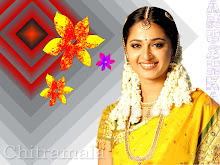
KASYAPASANA:
This asana is dedicated to the sage Kasyapa, son of the sage Marichi, a son of Brahma. He boreA an important share in the work of creation. It is said that Kasyapa married the thirteen daughters of Daksa. He beggot by Aditi the twelve Adityas(the gods0 and by Diti the Daityas (the demons), By his other wives he had diversified and numerous progeny such as serpents, reptiles, birds and nymphs of the lunar constellations. He was thus the father of Surya ( the sun god) and all living beings and is often called Prajapati(the Progenitor).
Techinque:
1.Stand in Tadasana.Bend forward, rest the palms on the floor as in Uttanasana and take the legs back about 4 to 5 feet, I Adho Mukha Svanasana.
2. Turn the whole body sideways to the right and balance on the right hand and foot. The outer side of the rifght foot should rest firmly on the floor. Place the left foot over the right foot, rest the left palm on the left hip and balance keeping the body straight
.3. Exhale, bend the left knee and place the left foot at the root of the right thigh as in half Padmasana. Swing the left arm from the shoulder behind the back and with the left hand catch the left big toe. This is the final position. Balance in it for some time with deep breathing. The entire chest and the extended right arm should be in one plane.
4. Exhale,.release the right foot and place it again over the right one and put the left hand o the left thigh. Take a few deep breaths.
5. Exhale, turn the body over to the left so that it balances only on the left hand and foot. Place the right foot at the root of the left thigh in half Padmasana and catch the ritght big toe from bwehind the back with the right hand. Balance on the both sides for an equal length of time.
6. Exhale, relaese the right foot and place it over the left foot and the right hand on the right thigh.
7. Rest the right palm on the floor and come back to Uttanasana, take a few breaths and with an exhalation return to Tadasana.
Effects:
This asana strengthens the hands and relieves pain and stiffness in the sacreal region of lthe spine.

No comments:
Post a Comment